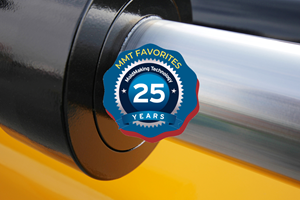How to Make a Good Investment Portfolio for Your Shop
By maintaining a balanced investment portfolio, moldmakers can reach financial goals.
Fluctuations in the market over the past few years may be making moldmakers more concerned about risk than they used to be. Fear of investment losses has left many wondering how to manage their portfolios. It is important to be aware of both potential declines in the value of a portfolio, as well as inflationary risk—the possibility that investments don't return enough to keep up with inflation.
While it can be challenging to find the right balance of stocks, bonds and cash for an account, there are a few basics to consider. First, think about what your goals are for the funds—such as sending a child to college or purchasing a dream home. Then, consider the amount of time needed to prepare for those events and how much is a comfortable risk. These factors will help determine what percentage of a portfolio should be in each type of investment. A financial consultant can also be a good guide in helping to determine what mix is right.
Once the percentage of stocks, bonds and cash is determined, look more specifically at the different types of investments and determine the risks associated with them:
- Stocks—Each type of stock has a unique risk and reward potential, and diversifying holdings is critical. While planning a stock portfolio, determining how many stocks should be held, in what quantity and in which companies can be difficult but aren't impossible. By having a good mixture, ideally between twenty and thirty different stocks, from six to eight different sectors, can help reduce some of the volatility of a portfolio.
- Bonds—Diversification of bond holdings also is important. There are three primary bond types from which to choose: government (e.g., U.S. Treasury securities), corporate and municipal. Keep in mind, each of these fixed income investments will have different terms (times to maturity) and yields (interest rates). Yields typically vary by the type of bond and the amount of risk associated with the bond.
- Cash—The cash portion of a portfolio often is considered the most stable portion because it typically returns an original investment to the owner. Cash includes investments such as certificates of deposit and U.S. Treasury Bills.
Because the value of investments continually change, one may need to adjust an investment mix to make sure it is still exposed to the right amount of risk. For example, a decline in the stock market may mean the percentage of assets invested in stocks declines from 70 percent to 60 percent. This could present a good buying opportunity for stocks to return a portfolio to its original percentages of stocks, bonds and cash.
Just as it is important to maintain balance in a portfolio, it also is vital to remember that just because one has determined what his or her investment mix should be, doesn't mean it is permanent. Adjustments to portfolios from time to time are necessary. Work with a financial consultant to update your portfolio as your lifestyle changes, such as family additions, sending a child to college or retirement. Remember, as your goals evolve, it is likely your strategy to reach them may also change. Fine-tuning your portfolio in a timely fashion will keep it in balance, help moderate your exposure to volatility and keep you on course to reaching your financial goals.
Related Content
How to Correctly Size a Hydraulic Cylinder
This week Randy shares steps for correctly sizing a hydraulic cylinder on a mold.
Read MoreIt Starts With the Part: A Plastic Part Checklist Ensures Good Mold Design
All successful mold build projects start with examining the part to be molded to ensure it is moldable and will meet the customers' production objectives.
Read MoreThe Benefits of Hand Scraping
Accuracy and flatness are two benefits of hand scraping that help improve machine loop stiffness, workpiece surface finish and component geometry.
Read MoreMold Design Review: The Complete Checklist
Gerardo (Jerry) Miranda III, former global tooling manager for Oakley sunglasses, reshares his complete mold design checklist, an essential part of the product time and cost-to-market process.
Read MoreRead Next
How to Use Continuing Education to Remain Competitive in Moldmaking
Continued training helps moldmakers make tooling decisions and properly use the latest cutting tool to efficiently machine high-quality molds.
Read MoreHow to Use Strategic Planning Tools, Data to Manage the Human Side of Business
Q&A with Marion Wells, MMT EAB member and founder of Human Asset Management.
Read More

















